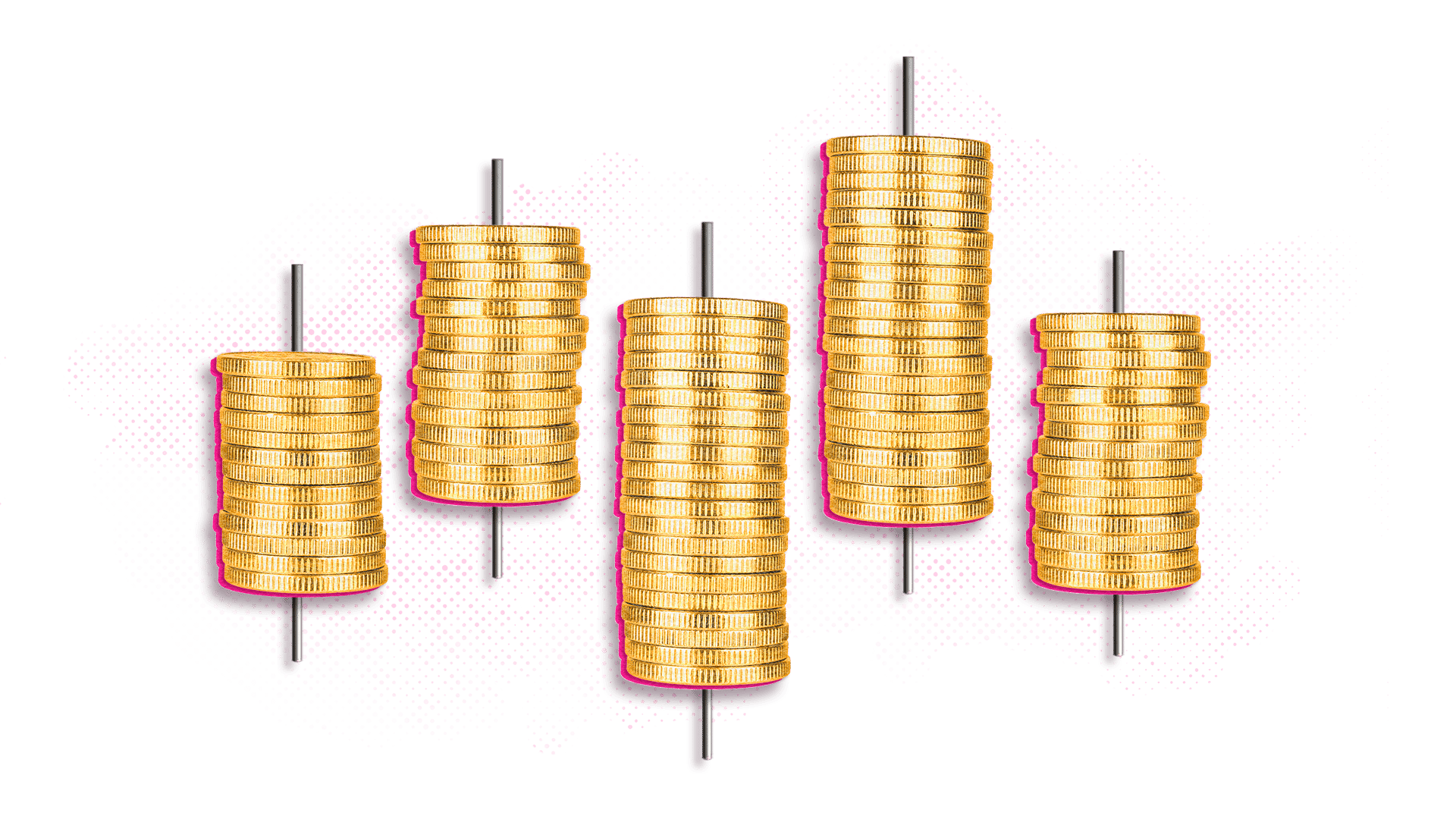At one point or another, we’ve all been frustrated after buying something, only to find it on sale a short time later. The same thing can happen in investing. While no one will refund you the difference if the price of an investment drops, dollar-cost averaging may be the next best thing. The strategy can help to lower your average cost per share over time. As an investor, that’s critical. The less you pay for something, the greater the potential upside if the price climbs higher.
Whether you’re a new investor looking to test the waters and learn how the markets work or a long-term investor keen to control your costs, dollar-cost averaging may be a simple strategy that could help you build a healthy portfolio.
What is dollar-cost averaging (DCA)?
Simple explanation: DCA or dollar-cost averaging is a way to reduce the impact of price volatility on your portfolio.
When investing in stocks, Exchange-Traded Funds (ETFs) or mutual funds, everyone knows it’s ideal to buy low and sell high. But with prices in constant flux, that’s easier said than done. Rather than investing your money in one lump sum, you could use a strategy known as dollar-cost averaging. This investing strategy involves directing the same amount of cash into the same investments, perhaps weekly or monthly, regardless of the price. By doing so, you can end up buying more shares at lower prices and fewer when prices are higher.
DCA can also help you form better saving habits. By putting money into the market on a set day every month — particularly through automated transfers, so you don’t have to move money yourself — you can continue to grow your savings over time.
Sure, the lump-sum option will get your money into the market faster, but it can also put you at greater risk of buying when a stock is at a near-term premium price. DCA reduces that risk by helping to smooth your average cost per share, often making this strategy well-suited for long-term investors.
How does dollar-cost averaging work?
DCA was designed to capitalize on the historical tendency of markets to fluctuate in the short term but rise over time. By spreading your investment across smaller, regular installments, the strategy essentially allows you to take advantage of these fluctuations by buying more units when prices are low and fewer units when they’re high.
Consider the following two scenarios.
Scenario 1
Approach: Lump-sum purchase
Investment: $12,000
Purchase price: $10/share
Total shares: 1,200
Scenario 2
Approach: Dollar-cost average over one year
Investment: $12,000
Purchase price: varies by month (see table)
| Month | Share Price | Number of Shares Purchased* |
| January | 10.00 | 100 |
| February | 10.20 | 98 |
| March | 10.07 | 99 |
| April | 9.97 | 100 |
| May | 10.02 | 99 |
| June | 9.92 | 100 |
| July | 9.72 | 102 |
| August | 9.65 | 103 |
| September | 9.63 | 103 |
| October | 9.77 | 102 |
| November | 9.77 | 102 |
| Dec | 9.77 | 102 |
* Excludes fractional share purchases
Total shares: 1,209
Average cost: $9.88
Even when the variation in share price is small, dollar-cost averaging can help you buy more shares at a lower cost. In this case, the average cost per share using the DCA strategy would be $9.88 vs. $10 if the money was invested all at once — giving you nine additional shares in your portfolio (1,209 vs. 1,200).
Who is it for?
Anyone can employ dollar-cost averaging, but it is particularly useful for new investors who are managing their own accounts and aren’t interested in trying to decipher the daily fluctuations of the market and long-term investors looking to keep their costs down.
It can also be one way to dip your toe into investing with your Direct Investing account and build a habit of making regular contributions. Still, it requires a certain level of discipline to stick to the strategy, especially when the market is going in the wrong direction. And although some volatility in share price is normal, you still need to pay attention to your investment to make sure it continues to suit your investment goals.
Dollar-cost averaging vs. timing the market
Dollar-cost averaging may not net you the lowest average price on your investment, but you likely won’t be paying the highest price for your shares either. If you understand the basics of investing, you’ll know that keeping your cash on the sidelines too long while waiting for the perfect moment (i.e., timing the market) can be a risky strategy. In fact, some investors end up missing their chance to buy shares at a discount before they bounce back.
Here’s a look at how DCA might apply in different market conditions:
- Bear market: In a challenging market, investing regularly can help you take advantage of some falling values in your portfolio.
- Rising market: In a bull market, DCA may be less effective because the price you’re paying for shares keeps rising.
Dollar-cost averaging: Pros and cons
Pros
- Reduces risk: One of the most enticing aspects of DCA is that it could help reduce the impact of market volatility on your investment. If you’re spreading your money out over the course of the year, you might not have to worry about a big rise or fall the day after you make a move.
- Keeps your emotions in check: DCA can help take some of the anxiety out of investing because you’re committed to a plan regardless of what happens on a daily basis. When your mood doesn’t fluctuate alongside the market, you may find you’re less stressed.
- Ideal for smaller budgets: When you’re just starting out with a small amount of money, you have a choice: either allocate your wealth to one or two investments or spread it out across a wider number of investments to build a diversified portfolio. DCA can give you an effective way to grow your portfolio while maintaining your chosen level of diversification, which can help you manage volatility and lower your risk.
Cons
- Benefits can weaken over the long term: Because markets tend to go up over time, if you use dollar-cost averaging over a longer time frame, you could end up paying more for your investment than you might have had you invested your money as a lump sum.
- Potentially higher transaction costs: Depending on the platform you use and which investments you’re adding, you may have to pay trading fees every time you add to your positions. Doing that regularly over the course of a year can drive up your costs and eat away at your net return.
- Process under-analysis: DCA can be a great habit for investors to adopt, but it can also lull investors into a false sense of security. Becoming too reliant on DCA — or any investment strategy — can be risky if it prevents you from taking a closer look at your investments. This in turn can delay you from pulling your money out of a particular investment if the situation calls for it.
Bottom line
Dollar-cost averaging is a common investment strategy for people who are reluctant to try timing the market. It’s a simple approach that’s easy to implement on a smaller budget and the risk reduction it offers can make for a less stressful introduction to investing.
![]()
FAQ: Dollar-cost averaging
Is dollar-cost averaging a good idea?
Dollar-cost averaging can typically help mitigate the impact of volatility on your portfolio. It can also help instill the discipline required to build yourself a healthy financial future.
Is DCA the best strategy?
There are many different investment strategies out there, each with its own benefits and drawbacks. It’s difficult to say which one is actually “the best.” One of the benefits of dollar-cost averaging is that it’s easy to implement. Instead of keeping your cash on the sidelines while waiting for the perfect time to invest, a DCA strategy eases you into the often emotional experience of investing while still providing competitive returns.
Is lump-sum investing better than dollar-cost averaging?
It depends. An assessment of your risk tolerance may give you clues about the style of investing that could be right for you. For an investor with a higher risk tolerance, lump sum investing may make sense. But if you are uncomfortable with price volatility or want to spread your money across your portfolio to maintain diversification, then dollar-cost averaging may be worth exploring.
Is dollar-cost averaging useful during a recession?
A recession could be viewed as an opportune time to employ a DCA strategy because as the market falls, you’ll be able to buy more shares of an asset for less money. It also protects investors against the sort of bad luck that might otherwise see them invest a large sum of money the day before a steep decline.
How long should you use dollar-cost averaging?
Dollar-cost averaging can be effective at countering short-term volatility and providing a stable cost base depending on your investment horizon and what the market does over time. If you decide to use this strategy, it’s important to come up with a plan and a time frame that you’re happy with and stick to it, even when a fluctuating market tempts you to do otherwise.
How do you master dollar-cost averaging?
The best way to get better at DCA or any investment strategy is to educate yourself on how it works.








